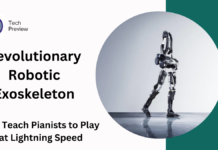While artificial intelligence (AI) technology has existed for decades, it was the introduction of the large language model (LLM) that truly propelled its capabilities into new frontiers. LLMs have been instrumental in moving natural language processing (NLP) forward, making huge strides in areas like text generation, sentence completion, translation, and more.
The breakthrough, though, lies in the heart of these LLMs – a deep learning architecture known as the transformer model. But what exactly is a transformer model, and how has it cemented its position in the software arena?
The Basics of the Transformer Model
A transformer is a type of deep learning model that utilizes a unique structure to handle sequential data (like natural language) efficiently. To truly understand its significance, it’s important to explain what the models before it did.
Before the transformer model, recurrent neural networks (RNNs) and convolutional neural networks (CNNs) were the go-to-choices for handling sequential data. They processed data piece by piece, in the order it was given. However, the inherent sequential nature of these models limited their speed as they couldn’t process data in parallel.
The transformer model circumvents this constraint by using a mechanism called “self-attention”. A guide to large language models explains this further – the mechanism enables the model to focus on different parts of the input sequence simultaneously, thereby processing data more efficiently and in parallel and reducing the time taken significantly.
Furthermore, the self-attention mechanism helps the model understand the context better by weighing different words in the sequence differently based on their relevance. This means that it can link related words together even if they are far apart in the sequence, understanding nuanced dependencies not possible with previous models.
Applications of the Transformer Architecture
The applications of the transformer model are vast, predominantly owing to its sophisticated handling of large amounts of data and its ability to understand context.
Some common applications include:
- Text generation: transformer-based models like GPT-4 are capable of producing text that is nearly indistinguishable from that written by a human. The technology finds its uses in article generation, content creation, and the like.
- Automatic speech recognition: The model’s parallel processing abilities make it suitable for automatic speech recognition (ASR) systems that are commonly used in transcription services and voice assistants. Such systems are responsible for transcribing human speech into written text.
- Machine translations: Traditional methods struggled with handling the contextual intricacies of some languages. The transformer’s proficiency in dealing with long range dependencies in sequences makes it ideal for language translation software.
The Transformer Model’s Impact
As mentioned before, LLMs like ChatGPT and GPT-4 have significantly impacted fields that rely on natural language understanding. According to market research, the global LLM market is expected to be worth $85.6 billion a year by 2034. The report factors in the increasing demand for natural language processing capabilities in areas like customer service, language translation, and content creation.
LLMs have already seen growth in various business sectors like retail, finance, and even healthcare, improving efficiencies across customer support, risk analysis, patient care, and a lot more. From a broader perspective, the incorporation of transformer models into AI-based solutions has revolutionized interactions between computers and humans, bridging the gap between human language and computer understanding.
Recent Developments
As revolutionary as the transformer architecture is, there is still plenty of room for improvement. For instance, models like ChatGPT tend to use up a lot of memory and have computational demands.
Early this year (2024), a revised version of the transformer model, which features a reduced size, was introduced. The new model still retains the original’s speed and accuracy, but is a lot less resource demanding. It’s a promising development that may pave the way for more efficient LLMs.
Bottom Line
The transformer has indeed been a game-changing component in the world of AI. Continuous advancements in this area signal an exciting future as we strive to develop further improved models and open up endless possibilities for AI and NLP applications.








